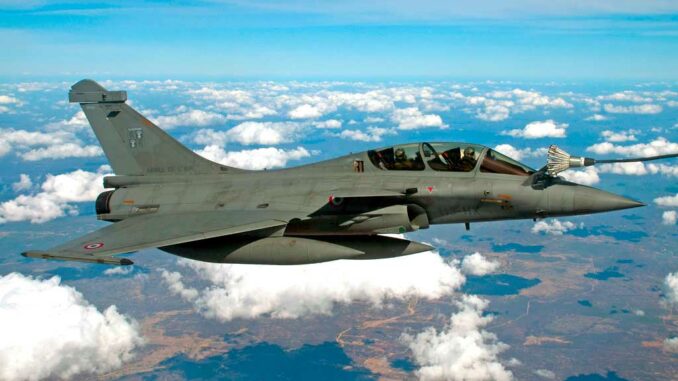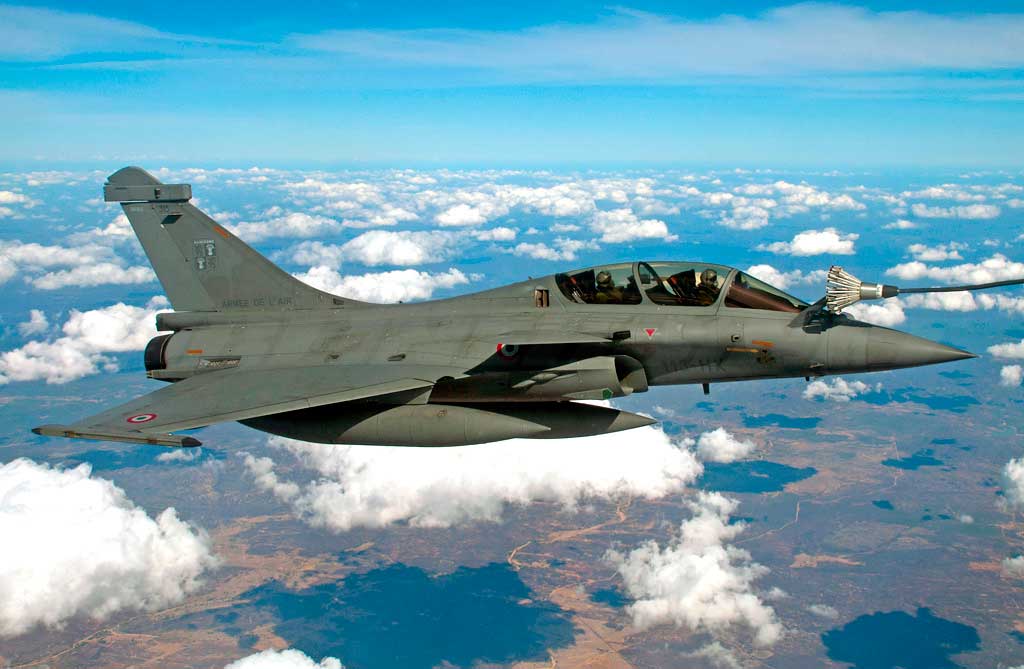
Beijing has launched a disinformation campaign targeting the Rafale, taking advantage of Operation Sindoor to promote the J-10C and the PL-15 missile.
An information offensive targeting the Rafale after Operation Sindoor
Since early July 2025, China has been conducting a disinformation campaign on social media about the Rafale, the French fighter jet in service with several armies, including India’s. This digital offensive follows armed clashes between India and Pakistan during Operation Sindoor, a rapid and intense military escalation in the Jammu and Kashmir region.
The trigger was the alleged loss of at least one Indian Rafale, information that has not been officially confirmed by New Delhi but has been widely reported on platforms such as X (formerly Twitter). Accounts linked to the pro-Beijing sphere claim that the shoot-down was carried out by Chinese J-10C aircraft delivered to Pakistan, using PL-15 long-range missiles. The narrative emphasizes the alleged technological superiority of Chinese weapons, particularly in terms of detection, electronic warfare, and missile range.
The CEO of Dassault Aviation, Éric Trappier, responded publicly, describing the accusations as an “orchestrated smear campaign” aimed at undermining the Rafale’s credibility in strategic markets. He stated that operational losses in a conflict cannot be interpreted as casting doubt on the platform itself, pointing out that the Rafale has been deployed in several operational theaters since 2004 with a proven reliability rate.
This information attack comes at a time when the Rafale is in direct competition with Chinese fighter jets, particularly for export contracts in Asia, the Middle East, and Africa. The timing is particularly sensitive for Dassault, with several negotiations underway, notably in Indonesia and Colombia.
A well-honored cognitive warfare strategy by Beijing
Military disinformation is nothing new in Chinese doctrine. For more than a decade, Beijing has institutionalized information warfare, also known as “cognitive warfare,” as a vehicle for geopolitical pressure. In the case of the Rafale, the mechanisms used are typical: viral dissemination of unauthenticated visual content, exploitation of coordinated anonymous accounts, hashtags in Mandarin and English, and relaying by semi-official accounts.
The messages published often feature blurred images of explosions, falsified radar interceptions, or videos of armed drones, allegedly Pakistani, targeting Indian fighter jets. This content is then interpreted as proof of the Rafale’s vulnerability to the J-10C, the Chinese fighter jet promoted by the PRC’s aerospace industry.
The objective is twofold: to undermine the image of the Rafale in export markets and to promote the performance of the J-10C, which is sold as a less expensive and technologically competitive alternative. According to several observers, the most aggressive messages come from accounts located in strategic linguistic areas, particularly in Indonesia, Egypt, Algeria, and Bangladesh—all countries that are in negotiations or have expressed interest in the Rafale.
In line with this logic, the PL-15 missile, with an estimated range of more than 300 kilometers, is presented as capable of neutralizing the Rafale before it even enters firing range. However, technical data on the PL-15 remains largely classified, and no credible independent assessment has demonstrated a systematic advantage over the European Meteor, which equips the Indian Rafales.

Crucial commercial stakes for Dassault Aviation
The Rafale, sold for around $85 million per unit (excluding weapons and logistical support), is one of France’s most exported defense products. Since 2015, Dassault Aviation has signed contracts with Egypt, Qatar, India, Greece, Croatia, the United Arab Emirates and, more recently, Indonesia.
In this context, any attack on the Rafale’s reputation, whether military or media-driven, takes on a strategic dimension. The current campaign comes at a delicate time for the fighter jet market, with the J-10C seeking to establish itself as a more affordable Asian alternative, with an estimated unit price of around $50 million. Beijing’s diplomatic support further enhances the appeal of this model for non-aligned countries or those dependent on Chinese state loans.
According to military analysts, the attempt to discredit the Rafale is based on a prefabricated narrative: that it is too expensive, vulnerable to new generations of Chinese air-to-air missiles, and technologically outdated due to rapid advances in Chinese industry. This approach overlooks several operational realities. On the one hand, armies that have integrated the Rafale report an availability rate of over 75%. On the other hand, no confirmed losses in air combat had been recorded until the battle mentioned in Operation Sindoor.
Dassault Aviation has reaffirmed that the Rafales delivered to India are customized to the needs of the Indian Air Force, with advanced sensors, AESA RBE2 radar, a Spectra electronic warfare system, and encrypted data links. The Indian version of the Rafale is also compatible with the Meteor missile, designed to engage targets beyond 200 kilometers.
A diplomatic issue for India and France
The current disinformation campaign has repercussions far beyond the military sphere. For New Delhi, it is a matter of defending a major strategic choice made in a context of growing tension with Beijing and Islamabad. Questioning the effectiveness of the Rafales also undermines the credibility of the Indian Air Force’s doctrine of air superiority.
France, for its part, sees this campaign as an attempt to undermine its strategic interests in the Indo-Pacific region. The Rafale is also a lever for its defense diplomacy: Paris systematically links its sales to industrial cooperation, technology transfer, and cross-training programs, which the Chinese arms sales system does not allow.
The French embassy in India has discreetly indicated that the communication surrounding the alleged losses was being exploited by sources whose reliability is questionable, without explicitly mentioning Beijing. The Indian military command refrained from officially commenting on the rumors circulating on X, but anonymous military sources indicated that no Rafale aircraft had been shot down by a PL-15 missile and that only one aircraft had been damaged on the ground.
This affair also reveals the limits of international regulations on information warfare. No authority can currently sanction a state for aggressive digital campaigns with commercial aims. The Rafale affair involving the J-10C could therefore become a test case for the future regulation of such practices.
War Wings Daily is an independant magazine.